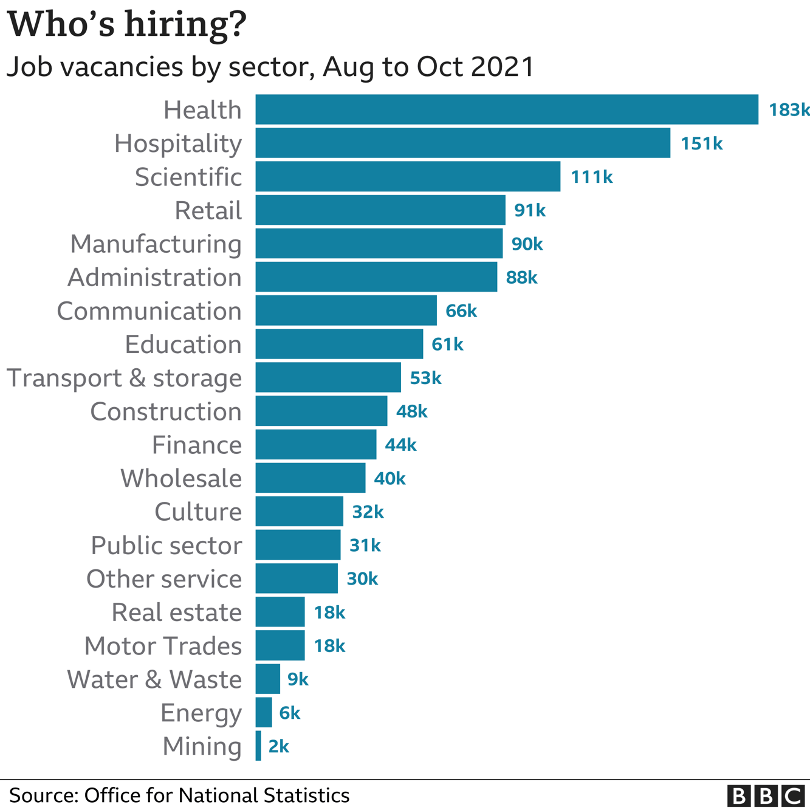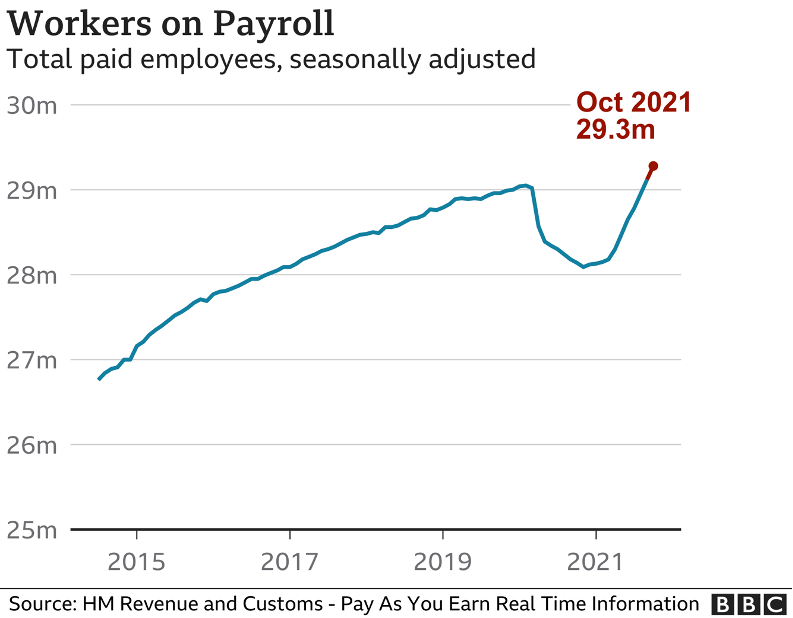Highlights
- In the three months to September 2021, labour market statistics published by the Office for National Statistics show almost 500,000 fewer people in employment than before the pandemic. Nearly 40% of these people were aged under 25. Unemployment had increased by over 70,000, while 270,000 more people were economically inactive. (House of Commons Library, 2021)
- According to the Office for National Statistics (ONS), there were 1.17 million job openings in October – almost 400,000 higher than before the pandemic. Moreover, some 2.2 million people started a new job between July and September. (ONS, 2021)[1]
- Many businesses have ceased operating or have had to change their working practices, while recent government interventions have allowed for the furloughing of workers. In addition, the introduction of social distancing has also changed the way individuals work or their ability to look for and find employment. (ONS, 2021)[2]
Temporary Recruitment
- Workplace closures have caused fewer businesses to require temporary workers, which has reduced demand for the industry’s services since the coronavirus outbreak.
- Major music events have been cancelled, and many sporting events were played without crowds for much of 2020-21. Many of these events often use temporary staff, which is expected to contribute to low revenue over the two years through 2021-22.
- Economic uncertainty may benefit the industry in the short term, as employers could become more likely to hire temporary workers than commit to permanent staff.
(IBIS World, 2021)[3]
Key Developments
- COVID-19 Job Vacancies: Which sectors are short of workers?
According to the Office for National Statistics (ONS), there were 388,000 more vacancies in the period (August to October 2021) than the three months immediately before the pandemic (January-March 2020), with record highs in 15 of its 18 sector categories. (ONS Stats published by BBC, 2021)

- Labour Force Survey estimates for July to September 2021 show the employment rate increased 0.4 percentage points on the quarter, to 75.4%. A record-high net flow from unemployment to employment drove the quarterly increase in employment. Total job-to-job moves also increased to a record high, driven mainly by resignations rather than dismissals, during the July to September 2021 period. The rise is also driven by an increase in part-time work and the number of people on zero-hour contracts, driven by young people. (ONS, 2021)
- The unemployment rate decreased 0.5 percentage points on the quarter to 4.3%, while the inactivity rate remained unchanged at 21.1%. (ONS, 2021)
- From July to September 2021, annual growth in average total pay (including bonuses) was 5.8%, and regular pay (excluding bonuses) was 4.9%.
Annual growth in average employee pay has been affected by temporary factors that have inflated the headline growth rate. These factors are now reducing and having a minor impact on growth rates: factors being base effects where the latest months are directly compared with low base periods when earnings were first affected by the coronavirus pandemic; and compositional effects where there has been a fall in the number and proportion of lower-paid employee jobs, therefore increasing average earnings. (ONS, 2021)

- According to the Institute for Employment Studies (IES), there is a vast “participation gap” in the labour force caused by older people not going back to work after losing their jobs and more young people staying in education. Nearly a million workers are missing from the labour market, and their absence is now holding back our recovery and adding to inflation. (IES Stats published by BBC, 2021)
Government employment support
The Government has put in place various initiatives aimed at getting people back into employment:
- In July 2020, the Government published the measures to get people back into employment, keep people in their jobs, and create new jobs. This included the introduction of the Kickstart scheme.
- In September 2020, the lifetime skills guarantee was announced, which will provide a fully-funded college course to any adult without an A-Level or equivalent qualification.
- As part of the November 2020 Spending Review, the Restart programme was announced. It will support unemployed people to find work.
- In the Plan for Jobs and the March 2021 Budget, incentive payments were announced that would be paid to employers when they take on new apprentices or trainees. Other measures were reported in the January 2021 Skills for Jobs White Paper.(House of Commons Library, 2021)
The Kickstart Scheme
The Kickstart Scheme provides funding to employers who create new jobs for young people. As of 9 November 2021, over 100,000 young people had found work, and 217,000 job placements had been approved and made available.
Employers were able to apply for the scheme from 2 September. Kickstart jobs initially needed to be started by the end of 2021, but the scheme was extended as part of the Plan for Jobs Expansion. Employers can now apply for funding until 17 December 2021, and Kickstart jobs need to be started by 31 March 2022. (House of Commons Library, 2021)
Apprenticeship incentive payments
In response to the pandemic, two increases to the incentive payments paid to employers when they take on new apprentices have been announced.
In the March 2021 Budget, the Government announced that it would pay employers in England £3,000 for every new apprentice they hire between 1 April 2021 and 30 September 2021. In October 2021, it announced that the £3,000 would also be available for every new apprentice hired between 1 October 2021 and 31 January 2022.[4]
Before the pandemic, the Government provided £1,000 to employers for every apprentice they took on, aged between 16 and 18 or between 19 and 24 and had previously been in care or had a Local Authority Education, Health and Care plan. The new payment will be in addition to this. (House of Commons Library, 2021)
Health-care Staff Recruitment Agencies
- Revenue growth is expected to accelerate in the two years through 2021-22 due to a surge in demand for healthcare staff during the coronavirus outbreak.
- Technology-driven recruitment styles were increasingly used instead of face-to-face interviews, following strict social distancing measures ordered by the government during the outbreak.
- The NHS is expected to resume primarily using in-house staff banks following the end of the coronavirus crisis, slowing industry revenue growth. (IBIS World, 2021)[5]


